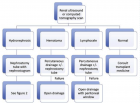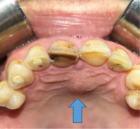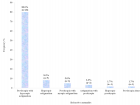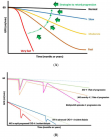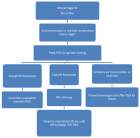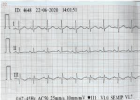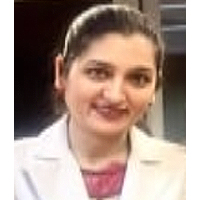About Benha University
Benha University
Articles by Benha University
Evaluation of the predictive value of CHA2DS2-VASc Score for no-reflow phenomenon in patients with ST-segment elevation myocardial infarction who underwent Primary Percutaneous Coronary Intervention
Published on: 28th October, 2019
OCLC Number/Unique Identifier: 8303626780
Objective: The aim of this study was to estimate the predictive clinical value of CHA2DS2-VASc score for no-reflow phenomena in patients having ST-segment elevation myocardial infarction (STEMI) who applied to primary percutaneous coronary intervention (PCI).
Subjects and Methods: Three-hundred STEMI patients underwent primary PCI. They were classified into: group (1) included 27 patients with no-reflow and group (2) included 273 patients without no-reflow (control). CHA2DS2-VASc risk score was computed for each patient.
Results: This study found statistically significant difference (p < 0.05) in multivariate analysis of the association between CHA2DS2-VASc score and no-reflow phenomenon. The predictive power of individual components in CHA2DS2-VASc score for no-reflow was statistically significant difference (p < 0.05). So, significantly higher CHA2DS2-VASc score is connected with higher risk of no-reflow and in-hospital mortality rate.
Conclusion: Significantly higher CHA2DS2-VASc score is associated with higher risk of no- reflow phenomenon and in-hospital mortality rates in patients with STEMI who underwent primary PCI.
Evaluation of the effect of coronary artery bypass grafting on the right ventricular function using speckle tracking echocardiography
Published on: 30th December, 2019
Purpose: This was a prospective study conducted at Benha University hospital and National Heart Institute on one hundred patients undwent coronary artery bypass grafting (CABG) to evaluate the effect of CABG on the right ventricular (RV) function using speckle tracking echocardiography (STE).
Methods: All cases were subjected to detailed medical history, full physical examination, 12 leads electrocardiogram (ECG), routine laboratory tests including (complete blood picture, liver functions, renal functions and lipid profile) and echocardiography either conventional echocardiography or STE, all parameters obtained before and within 2 weeks after surgery.
Results: By conventional echocardiography there was statistically significant decrease in peak right ventricle systolic velociy (RVS) from (12.76 ± 1.72) to (7.33 ± 1.71) and tricuspid annular plane systolic excursion (TAPSE) from (22.8 ± 3.99) to (13.77 ± 4.63) among the studied patients after CABG. While there was significant increase in right ventricle fractional area change (RVFAC) from (44.69 ± 3.25) to (49.01 ± 3.36). On the other hand, there was non-significant change in right ventricle end diastolic diameter (RVEDD) at mid-cavity from (26.37 ± 2.72) to (26.53 ± 2.72) and basal segment from (36.05 ± 2.98) to (36.29 ± 3.04), right ventricle stroke volume (RVSV) from (65.44 ± 7.02) to (65.85 ± 6.86) and right myocardial performance index (RMPI) from (0.491 ± 0.088) to (0.498 ± 0.086).
By STE There was statistically significant decrease in right ventricle global longitudinal strain (RVGLS) from (-20.63 to -14.1) after CABG. There was statistically significant decrease in right ventricle free wall longitudinal strain [apical decreased from (-23.73 to -13.7), mid-cavity decreased from (-25.76 to -11.53), basal decreased from (-20.39 to -10.13) and lateral wall declined from (-23.01 to -9.13)]. There was statistically significant decrease in interventricular septum longitudinal strain [apical decreased from (-19.77 to -10.06), mid-cavity decreased from (-17.81 to -10.87) and basal decreased from (-15.89 to -11.13)]. There was statistically significant increase in RV circumferential strain of lateral free wall from (-12.04 to -16.21), while there was non-significant change in RV circumferential strain of septum from (-19.77 ± 4.86) to (-20.37 ± 5.14).
Conclusion: Distorted RV geometry after CABG can lead to altered deformation parameters, in other words longitudinal functional parameters may underestimate RV function and the decrease in RVGLS was compensated by increase in circumferential strain of lateral free wall of RV without change in RVSV or RMPI. Therefor changes in deformation parameters should always be interpreted in relation to change in geometry.

HSPI: We're glad you're here. Please click "create a new Query" if you are a new visitor to our website and need further information from us.
If you are already a member of our network and need to keep track of any developments regarding a question you have already submitted, click "take me to my Query."






